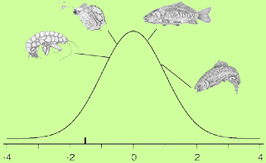| |
 |
 | '
Is it safe to pool the Blank Control Data with the Solvent Control data?
Nelly van der Hoeven*
ECOSTAT, Vondellaan 23, 2332 AA, Leiden, The Netherlands
* Corresponding Author:
Nelly van der Hoeven,
ECOSTAT,
Vondellaan 23,
2332 AA Leiden,
The Netherlands
tel.: (+)31-(0)71-5315011; fax: (+)31-(0)842-116988;
email:
Summary
Ecotoxicological studies, where the test chemical is dosed with a solvent, are often performed using two controls, a blank control (BC) and a solvent control (SC). In many guidelines, it is recommended to combine the data from the BC and the SC if they do not differ significantly and otherwise only use the data from the SC for the significance test on the effects of the chemical treatment. In this paper the validity of the conditional testing scheme is investigated by simulating data sets with and without difference between BC and SC. These simulations show that this testing scheme does not lead to a valid statistical test.
keywords: solvent control; statistical protocol; pooling controls; NOEC; conditional testing; type I error
Ecotoxicology and Environmental Safety, 73:1480-1483, 2010
Statistical methods and models
ECOSTAT uses a broad range of statistical methods and models. Sometimes, the standard methods will not suffice. In that case, ECOSTAT can adapt and extent the existing methods to make the method better applicable to your data and research questions.
Some examples of ECOSTAT's experience
-
Ecotoxicological studies, where the test chemical is dosed with a solvent, are often performed using two controls, a blank control and a solvent control. For the statistical analysis of these studies, it is often recommended to combine the data from both controls if they do not differ significantly and otherwise only use the data from the solvent control for the significance test on the effects of the chemical treatment. Nelly van der Hoeven of ECOSTAT has demonstrated in a simulation study that this method is incorrect.
- In ecotoxicological research the so-called No Observed Effect Concentration (NOEC) is often reported, that is the highest test concentration without a significant difference between that concentration and some control observation. To judge whether not observing an effect can be considered as an indication of at most a small effect, it is essential to indicate how large the effect should have been to be marked as significant, that is the Minimum Significant Difference (MSD). For normal distributed data, methods to calculate the MSD were already available.
Nelly van der Hoeven of ECOSTAT had developed a method to calculate the MSE for non-parametric statistical tests.

- The environmental risk of a chemical has to be assessed using toxicological data for only a small set of species. Based on such a small data set the maximum acceptable environmental concentration has to be assessed. One of the methods to extrapolate such a limited data set to the risk for the complete environment is to estimate the concentration at which at least 95% of the species will not be affected at all. This concentration is called the HC5. To apply this method it is usually assumed that the sensitivuity of the different species is log-normal distributed. Nelly van der Hoeven van ECOSTAT has developed a method to estimate the HC5 without any assumption on the distribution of the sensitivity of the different species.
|
|
|